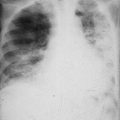and Karl Reinhard Aigner3
(1)
Department of Surgery, The University of Sydney, Mosman, NSW, Australia
(2)
The Royal Prince Alfred and Sydney Hospitals, Mosman, NSW, Australia
(3)
Department of Surgical Oncology, Medias Clinic Surgical Oncology, Burghausen, Germany
In this chapter, you will learn about:
Typing, grading and staging of cancer
Clinical decisions based on pathology information
The ultimate diagnosis of any benign or malignant tumour will depend upon a pathologist’s examination of a specimen of tissue. This can be a surface scraping of tissue, a small sample of cells taken by aspiration with a syringe, a small core of tissue taken with a small core cutting instrument, a small sample of representative tissue (incision biopsy) taken by a surgeon using a scalpel or other cutting instrument or even the whole tumour mass (excision biopsy) taken by a surgeon. The ultimate diagnosis is sometimes not confirmed until after death of the patient with specimens taken at autopsy.
No matter how the tissue sample is taken, the pathologist will, if possible, report on the macroscopic as well as the microscopic features of the tissue and its cells. Before the pathologist can report on the microscopic features of the tissue and cells in it, the tissue must be prepared in a solid block, usually a wax block, so that fine sections can be cut. The prepared tissue will be stained with appropriate stains to best display special features. Unless immediate cell smears or frozen section specimens (described later in this chapter) are prepared, most tissue preparations and staining procedures require at least 24 h and usually 2–3 days.
The pathologist will be able to report not only on the type of tissue but whether it is normal or abnormal tissue and if abnormal, whether it shows features of a tumour – benign or malignant.
If it is found to be a malignant growth, the pathologist will report on the range of relative normality and maturity of cells in it (i.e. the degree of anaplasia) and other more abnormal and aggressive features. If possible, a sample of surrounding tissue should be taken with the biopsy specimen so the pathologist can also report on the degree of invasion or infiltration of cancer cells into surrounding or underlining tissues.
6.1 Typing, Grading and Staging of Cancer
Best management of cancer will depend on many factors including patient factors (age, state of health, family, social and emotional considerations), hospitals or other treatment facilities with or without specialised nursing care and allied health professionals, as well as particular factors of the cancer itself.
The cancer factors include three special pathology considerations: the type, grading and staging of the cancer. These will be made with information provided by both the pathologist and the cancer treatment team.
6.2 Cancer Typing
The treatment team depends on the pathologist for confirmation of the presence of cancer, the cancer type and other features of the cancer. The most common malignancies are carcinomas from cells of epithelial surface or glandular type and usually retaining some of the features of these types of cells.
Other malignancies include those of connective tissue cell origin (sarcomas), germ-cell origin (testicular cancers and some ovarian cancers) and blood-forming cell origin (leukaemias and lymphomas). Malignancies that do not readily fit into any of the preceding group types include gliomas of the brain and myeloma, an uncommon tumour that develops in bone but is not of bone cells. Myeloma or multiple myeloma is a malignancy of plasmacytes in bone.
Stay updated, free articles. Join our Telegram channel

Full access? Get Clinical Tree






